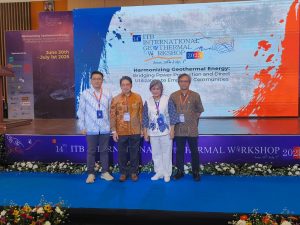Jakarta – The government needs to immediately mobilise non-government investment by establishing attractive policies, regulations and investment ecosystems, in addition to optimising public financing, to achieve the zero emission target by 2050. The pressure emerged during the launch of the latest Institute for Essential Services Reform (IESR) report. “Indonesia Sustainable Finance (ISFO) 2023”, Wednesday (19/10).
Fabby Tumiwa, Executive Director of IESR said that the government needs to make massive and transformative efforts to completely decarbonize the energy system by raising a total fund of around USD 1.2 trillion by 2050. According to a study by IESR and the University of Maryland, the cost of retiring 9.2 Gigawatt (GW) of coal power plants (PLTU) in the period 2022-2030 requires funds of around USD 4.6 billion. Furthermore, early retirement of all PLTUs in 2045 with an average age of 20 years requires USD 28 billion to compensate for stranded assets and the cost of decommissioning power plants.
“Efforts to end the PLTU operational period must be accompanied by an increase in the addition of renewable energy plants, strengthening of transmission, distribution and energy efficiency networks on a large scale,” said Tumiwa.
Furthermore, according to him, in the 2022-2023 period alone, USD 135 billion is needed for PLTU retirement, additional renewable energy, development of transmission and distribution, energy storage, and energy efficiency. Meanwhile, based on the findings of ISFO 2023, the government’s budget portion will only be able to allocate 0.83% of the total financing needed to achieve the target of 23% of the renewable energy mix by 2025, if it refers to the average budget allocation for climate change mitigation by the Directorate General of New Renewable Energy and Energy Conservation of the Ministry of Energy and Mineral Resources in 2018-2020 amounting to USD 67 million per year.
Farah Vianda, one of the authors of ISFO 2023, said that the same trend is also taking place at the provincial level. She said Central Java as one of the provinces that supports the development of renewable energy the most, but fiscal constraints make Central Java only allocate less than 0.1% of the total available in the regional budget.
“This is an impetus for local governments to seek financing outside the regional budget. The Indonesian government also needs to make the same effort by expanding funding sources to attract investment in the renewable energy sector,” said Vianda.
Regarding the financing of the energy transition through a carbon tax, Ichsan Hafiz Loeksmanto, the main author of ISFO 2023, explained that although he had planned to implement a carbon tax, and a cap and trade mechanism on 92 coal-fired power plants in 2022, the carbon tax revenue was limited to not earmarked. This means that the use of carbon tax revenues has not been devoted to financing climate change mitigation and adaptation efforts.
“The government needs to ensure the allocation of carbon tax revenues for climate mitigation and adaptation, as well as social safety nets. In addition, public transparency regarding payment of carbon taxes and carbon transactions is also necessary,” said Loeksmanto.
Highlighting international support, based on IESR’s calculation in ISFO 2023, there is potential for international funding of USD 13.1 billion or 35.4% of the total projected financing needs of USD 36.95 billion in 2025. (Hartatik)














